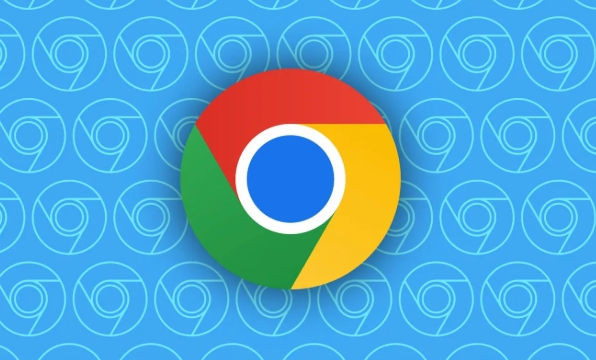There are three ways to view Chrome history on your computer: 1. Use the shortcut keys Ctrl H (Windows/Linux) or Command Y (Mac); 2. Click three dots through the menu bar → "History" → "History"; 3. Enter chrome://history/ in the address bar. To view on your phone, you need to open the Chrome app → Click the three dots (Android) in the lower right corner or the "???" button (iOS) at the bottom → select "History". If the synchronization function is enabled, you can view records of other devices. Chrome saves history for 90 days by default. If you need to keep it for a long time, you can export it as an HTML file or enable "Google Activity Control". Clearing some browsing data can be achieved through the "Clear browsing data" function, but currently, it does not support deleting a single history.

Chrome browser history feature can help you retrieve web pages you have visited before. If you want to know how to view Chrome history, the method is actually very simple and works for different devices.

How to view Chrome history on your computer
After opening Chrome, you can quickly view history in the following ways:

- Shortcut key method : Press
Ctrl H(Windows/Linux) orCommand Y(Mac) to directly open the history page. - Menu bar method : Click the three dots in the upper right corner → "History" → select the "History" option.
- Input in the address bar : Enter
chrome://history/in the address bar and press Enter.
After entering the history page, you can browse the websites you visited by date, or use the search box to find specific keywords.
How to view Chrome history on your phone
If you are using an Android phone or iPhone, the viewing method is slightly different:

- Open the Chrome app
- Click the three dots in the lower right corner (Android) or the "???" button in the middle of the bottom (iOS)
- Select "History" to see the most recent viewed content
It should be noted that if the synchronization function is enabled, you can see the browsing history on other devices on your phone; on the contrary, if you do not have a login account, you can only see the history of the current device.
How long can history be retained?
Chrome will not permanently save your browsing history by default. If you do not have a manual backup or export, the browser will automatically clean up records for more than 90 days. If you want to keep certain records for a long time:
- History can be exported regularly:
- Click "Export History" on the History page
- Save as HTML file for future reference
In addition, you can also consider enabling "Google Activity Control" to save your browsing history for a long time (pay attention to privacy settings).
Tips for clearing history
If you want to clear only some records instead of all, you can do this:
- Open the history page
- Click "Clear browsing data"
- Select the time range and the data type to clear (such as clearing only cookies or caches)
However, Chrome does not currently support deleting a certain history record separately, and can only operate in batches.
Basically that's it. Viewing Chrome history is not complicated, but it is easy to ignore some details, such as synchronization settings and shelf life. As long as you are familiar with a few commonly used entrances, it will be very convenient for daily use.
The above is the detailed content of How to view chrome history. For more information, please follow other related articles on the PHP Chinese website!

Hot AI Tools

Undress AI Tool
Undress images for free

Undresser.AI Undress
AI-powered app for creating realistic nude photos

AI Clothes Remover
Online AI tool for removing clothes from photos.

Clothoff.io
AI clothes remover

Video Face Swap
Swap faces in any video effortlessly with our completely free AI face swap tool!

Hot Article

Hot Tools

Notepad++7.3.1
Easy-to-use and free code editor

SublimeText3 Chinese version
Chinese version, very easy to use

Zend Studio 13.0.1
Powerful PHP integrated development environment

Dreamweaver CS6
Visual web development tools

SublimeText3 Mac version
God-level code editing software (SublimeText3)
 Google Chrome Speed ??Browser Official Edition Portal
Jul 08, 2025 pm 02:30 PM
Google Chrome Speed ??Browser Official Edition Portal
Jul 08, 2025 pm 02:30 PM
Google Chrome is a free and fast multi-platform web browser developed by Google. It is known for its speed, stability and reliability. Chrome is based on the open source Chromium project and is widely used on devices such as desktops, laptops, tablets and smartphones. The browser has a clean interface and a wide range of customizable options, allowing users to personalize it according to their preferences. In addition, Chrome has a huge library of extensions that provide additional features such as ad blocking, password management and language translation, further enhancing the browsing experience.
 How to install Chrome extensions on mobile (Kiwi, etc.)
Jul 11, 2025 am 12:50 AM
How to install Chrome extensions on mobile (Kiwi, etc.)
Jul 11, 2025 am 12:50 AM
Android phones can install Chrome extensions through KiwiBrowser. KiwiBrowser is an open source browser based on Chromium on the Android side. It supports the installation of the Chrome Web Store extension. The process is: Open Kiwi and enter the Chrome store, search for extensions, and click "Add to Chrome" to complete the installation; when using it, you need to pay attention to network stability, extension compatibility, permission granting and installation quantity; other alternatives include FirefoxMobile and YandexBrowser, but Kiwi is still the most stable and convenient choice at present.
 How to change the user agent string in Safari without extensions?
Jul 11, 2025 am 12:48 AM
How to change the user agent string in Safari without extensions?
Jul 11, 2025 am 12:48 AM
On macOS, you can modify Safari's UserAgent through developer tools or terminals, but iOS/iPadOS does not support it. The specific methods are: 1. Use the developer tools to modify temporarily: select preset UA after enabling the development menu; 2. Permanent modification through the terminal: enter the command to write a custom UA; 3. iOS/iPadOS cannot be modified directly, and it needs to rely on a third-party application or browser.
 What firewall ports does Chrome Remote Desktop use
Jul 13, 2025 am 12:43 AM
What firewall ports does Chrome Remote Desktop use
Jul 13, 2025 am 12:43 AM
ChromeRemoteDesktopusesport443(HTTPS)astheprimaryportforsecureconnections,andoccasionallyport80(HTTP)asafallback.ItalsoleveragesSTUN,TURN,andICEprotocolstoestablishpeer-to-peerconnections,withTURNactingasarelayifdirectconnectionsfail.Toensuresmoothop
 How to view chrome incognito history?
Jul 09, 2025 am 12:31 AM
How to view chrome incognito history?
Jul 09, 2025 am 12:31 AM
Chrome's incognito browsing history cannot be viewed directly, but it can be obtained indirectly through three methods. 1. Use command line tools to view the DNS cache, which can only obtain some domain name information and is not durable; 2. Check the router or network monitoring log, which requires certain network knowledge and depends on network settings; 3. Install third-party monitoring tools and configure in advance to record invisible browsing behavior. Overall, the invisibility mode is designed to protect privacy. All the above methods have limitations. It is recommended to choose whether to use monitoring methods based on actual needs.
 How to force quit Google Chrome on Mac
Jul 07, 2025 am 12:14 AM
How to force quit Google Chrome on Mac
Jul 07, 2025 am 12:14 AM
There are several ways to force exit from unresponsive Chrome on your Mac. First, use the keyboard shortcut Command Option Esc to open the "Force Exit Application" window, select Google Chrome and click "Force Exit". Second, click on the Apple menu, select "Force Exit", and select Chrome from the list and confirm quit. If Chrome completely freezes or consumes too much memory, you can open ActivityMonitor, find all Chrome-related processes, and click the X button one by one to end them. Finally, as an alternative, you can enter killallGoogle\Chrome in Terminal
 How to simulate different timezones in Chrome
Jul 13, 2025 am 12:19 AM
How to simulate different timezones in Chrome
Jul 13, 2025 am 12:19 AM
To test page behavior in different time zones in Chrome, there are three ways to do it. 1. Use ChromeDevTools to simulate the time zone: Open DevTools → Click on three points → MoreTools → Sensors, check the overlay option in the DateandTime section and select the target time zone. This setting only takes effect in the current session; 2. Specify the time zone through the command line startup parameters: close all Chrome instances and execute chrome.exe--timezone="target time zone" to affect the entire browser instance; 3. Use JavaScript to overwrite the behavior of the Date object, and the fixed time value is used to accurately control the JS time.
 How to stop Microsoft Edge from running in the background
Jul 16, 2025 am 12:34 AM
How to stop Microsoft Edge from running in the background
Jul 16, 2025 am 12:34 AM
There are four ways to turn off Microsoft Edge backend running. 1. Disable background running in Edge settings: Go to "Settings" → "System" and turn off the "Run Microsoft Edge in the background" option. 2. Close Edge in Windows startup item: Through the "Startup" tab of Task Manager, right-click Edge and select "Disable". 3. Modify the group policy or registry: Advanced users can create BackgroundModeEnabled registry key and set it to 0, or use the official group policy template. It is recommended to back up the system before operation. 4. Use Task Manager to manually end the process: temporary emergency plan, press Ctrl Shift Esc to open the Task Manager to end all Es






